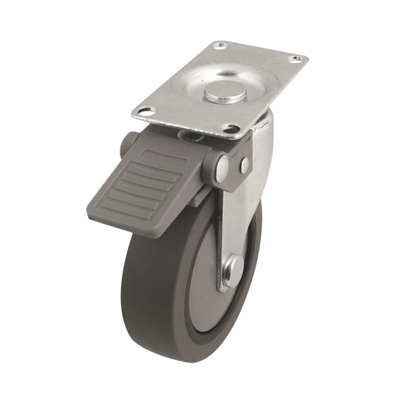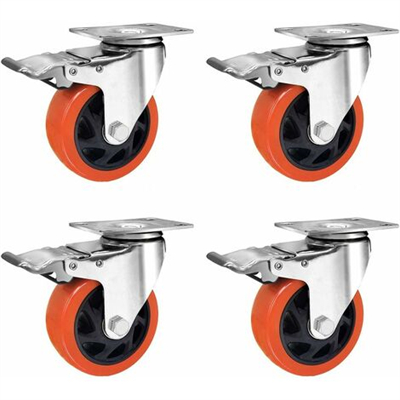The smooth movement of casters relies on several principles of science and engineering, encompassing factors like friction, weight distribution, and wheel design. To achieve smooth caster movement, it’s essentnd the following concepts:
- Friction: Friction is a force that opposes the relative motion or tendency of motion between two surfaces in contact. Minimizing friction is crucial for smooth caster movement. Several strategies are employed to reduce friction:
- Wheel Material: Choosing the right wheel material is essential. Materials like polyurethane and rubber are often used for their lower coefficients of friction, which means they offer less resistance when in contact with the floor.
- Lubrication: Proper lubrication of the wheel bearings and axles reduces friction and allows the caster to move smoothly.
- Weight Distribution: Distributing the load evenly across the casters is vital for smooth movement. If the load is not balanced or evenly distributed, it can lead to excessive friction and make the casters harder to roll.
- Center of Gravity: The center of gravity of the load should align with the center of the caster, preventing undue strain on one side of the wheel.
- Wheel Design: The design of the caster wheel plays a significant role in achieving smooth movement. Some important considerations include:
- Wheel Diameter: Larger wheel diameters roll more easily over obstacles and offer better load distribution, resulting in smoother movement.
- Wheel Tread: The tread pattern and composition of the wheel can affect traction and rollability. Smooth treads work well for hard, flat surfaces, while more textured treads provide better traction on uneven terrain.
- Wheel Bearings: High-quality bearings reduce rolling resistance and enable smoother movement.
- Swivel Design: Swivel casters rotate around their vertical axes, which is crucial for maneuverability. The swivel mechanism should be designed to minimize friction and maintain smooth rotation.
- Ball Bearings: Swivel casters often use ball bearings in the swivel raceway for low-friction rotation.
- Double-Ball Raceways: Some casters incorporate double-ball raceways for improved swivel performance and stability.
- Wheel Alignment: Proper caster alignment ensures all wheels work together and minimizes strain on any one wheel. Misaligned wheels can cause excessive friction and difficulty in rolling.
- Maintenance: Regular maintenance, including cleaning, lubricating, and checking for damage, is essential for the long-term smooth operation of casters.
- Floor Surface: The type and condition of the floor surface can influence caster movement. Smooth, clean, and level surfaces are ideal for easy rolling, while rough or uneven surfaces may require specialized caster designs.
- Load Capacity: Exceeding the caster’s weight capacity can lead to instability, increased friction, and uneven wear, all of which can hinder smooth movement.
In summary, achieving smooth caster movement involves a combination of material selection, weight distribution, wheel design, and maintenance practices. Reducing friction and ensuring proper alignment are key factors in the science behind smooth caster operation. Consider the specific application and environment when choosing casters to ensure they will provide the desired level of smooth movement and durability.


